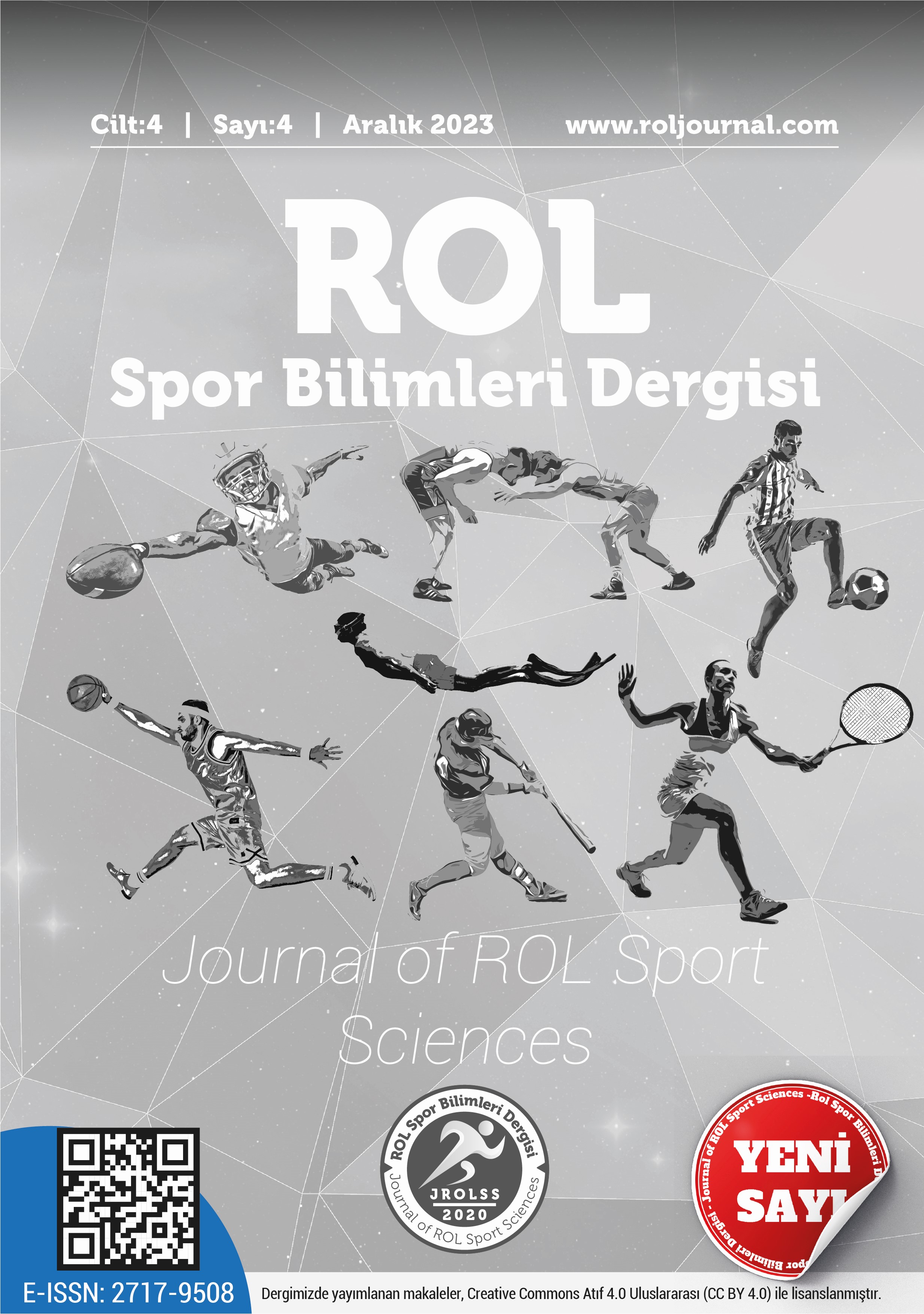Examining the attitudes of combat athletes towards their sports
DOI:
https://doi.org/10.5281/zenodo.10439484Keywords:
Combat sports, attitude, athleteAbstract
In this study, it is aimed to investigate the attitudes of licensed athletes affiliated to Kickboxing and Muay Thai Federations towards their disciplines. A total of 497 athletes, 299 men and 198 women, participated in the study. The Attitude Scale Towards Competitive Sports and a personal information form prepared by the researcher were used to collect data within the scope of the research. The normality distributions of the data obtained were examined and it was determined that the distribution was close to normal. T-tests and Pearson correlation tests were used to investigate the relationship among the two concepts. Additionally, Confirmatory Factor Analysis (CFA) was conducted using the AMOS 23 program to ensure the validity of the measurement instrument. In conclusion, significant differences were observed in the satisfaction and motivation sub-dimensions of the scale across variables, whereas no significant difference was found in the enjoyment sub-dimension. This findigs suggest that Muay Thai athletes have a more negative attitude compared to kickboxers.
References
Ajzen, I., & Fishbein, M. (1980). Understanding attitudes and predicting social behavior. Journal Current Urban Studies, 4(1),12-23.
Bıyık, K., & İmamoğlu, O. (2022). Penaltı atışlarında futbolcuların psikolojik durumları. Gazi Kitapevi.
Buse, G. J., & Santana, J. C. (2008). Conditioning strategies for competitive kickboxing. Strength & Conditioning Journal, 30(4), 42-48.
Ceylan, L., Bilen, E., Eliöz M., & Küçük, H. (2022). Comparison of motivation levels of outdoor and ındoor athletes studying physical education and sports training. Journal of Educational Issues, 8(1), 629-642 2022
Çakır, Z., & Erbaş, Ü. (2021). Taekwondo, Karate ve judocuların mücadele sporlarına yönelik tutum düzeylerinin belirlenmesi. The Online Journal of Recreation and Sports, 10(4), 23-31.
Demirhan, G., & Altay, F, (2001). Lise birinci sınıf öğrencilerinin beden eğitimi ve spora ilişkin tutum ölçeği II. Spor Bilimleri Dergisi, 12(2), 9-20.
Eagly, A. H., & Chaiken, S. (1993). The psychology of attitudes. Harcourt Brace Jovanovich College Publishers.
Fiske, S. T., Cuddy, A. J., & Glick, P. (2007). Universal dimensions of social cognition: Warmth and competence. Trends in Cognitive Sciences, 11(2), 77-83.
George, D. & Mallery, M. (2001). SPSS for Windows step by step: A simple guide and reference 10.0 update. (3. Baskı). Allyn & Bacon.
İnceoğlu, M. (1993). Tutum algı iletişim, Verso Yayıncılık.
Kayapınar, F. Ç., Temür, S., Akcan, F., & Temür, M. (2016). Mücadele sporlarına ilişkin tutum ölçeği geliştirme çalışması. International Journal of Sport, Exercise and Training Sciences, 2(2), 82-88.
Leech, N. L., Barrett, K. C. & Morgan, G. A. (2005). SPSS for intermediate statistics: Use and interpretation. (2. Baskı). Taylor & Francis.
Noh, J. W., Park, B. S., Kim, M. Y., Lee, L. K., Yang, S. M., Lee, W. D., ... et al. (2015). Analysis of combat sports players’ injuries according to playing style for sports physiotherapy research. Journal of Physical Therapy Science, 27(8), 2425-2430.
Orhan, S., Yücel, A.S., Sadeq, B.J., & Orhan, E. (2019). Investigation of the exercise dependence of athletes doing kickboxing, taekwondo, and muay thai. Sports, 7(2), 52.
Şahin H. M. (2006). Beden Eğitimi ve Spor Sözlüğü, Morpa Yayınları, İstanbul.
Zetaruk, M. N., Violan, M. A., Zurakowski, D., & Micheli, L. J. (2000). Karate injuries in children and adolescents. Accident Analysis & Prevention, 32(3), 421-425.
Downloads
Published
How to Cite
Issue
Section
License
Copyright (c) 2023 Journal of ROL Sport Sciences

This work is licensed under a Creative Commons Attribution 4.0 International License.

